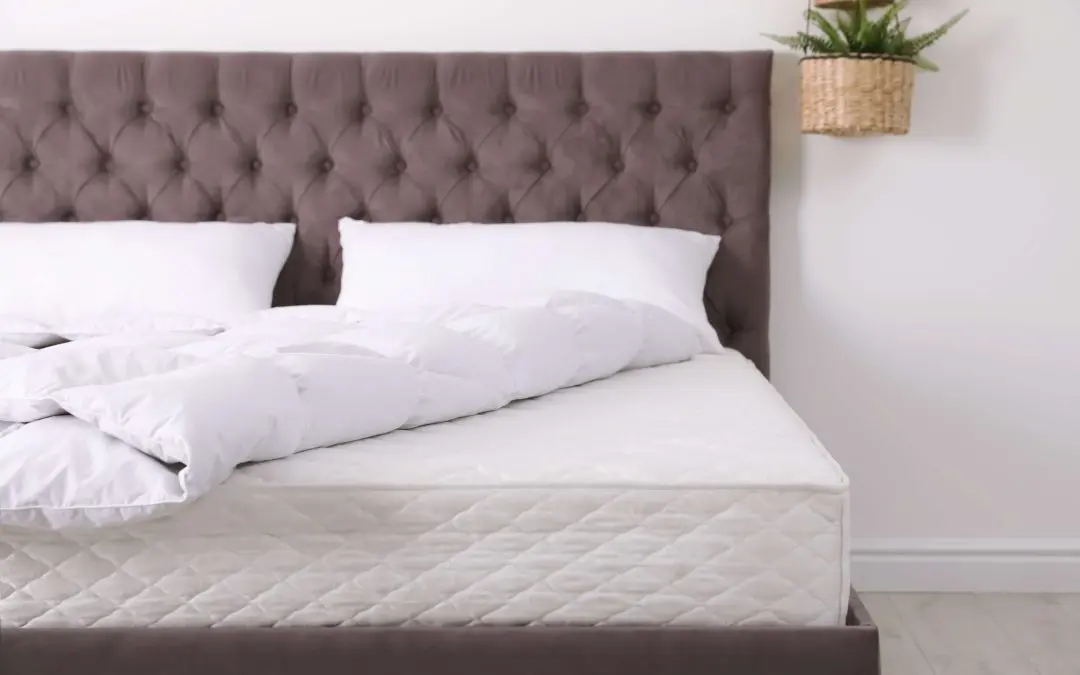The quality of your mattress impacts your sleep quality and overall health. Since it’s a significant investment, you’ll want it to last as long as possible. While most are designed to last between 7 to 10 years, proper care will extend the life of your mattress even further. In this post, we’ll explore expert strategies for maintaining your mattress and keeping it in optimal condition.
Rotate and Flip Your Mattress
Over time, your body’s weight and pressure can cause indentations and uneven wear on your mattress. To prevent this, rotate your mattress regularly. For most mattresses, rotating every three to six months is ideal. This means turning the mattress 180 degrees so that the head of the bed is now at the foot and vice versa.
If your mattress is double-sided, flipping and rotating it will further distribute wear and tear. This helps the mattress wear evenly, reducing the likelihood of sagging or lumps developing in one area.
Use a Mattress Protector
Mattress protectors are the first line of defense against spills, stains, and allergens. Whether it’s liquids, dust mites, or dead skin cells, a mattress protector shields your mattress from contaminants that degrade its materials.
Investing in a waterproof, breathable protector will help keep your mattress clean and extend its life. It’s also easy to remove and wash, which is much easier than cleaning the mattress.
Keep Up With Cleaning to Extend the Life of Your Mattress
Even with a mattress protector, regular cleaning is essential. Dust, sweat, and other particles still accumulate over time. To keep your mattress fresh, vacuum it every few months using a handheld vacuum or a brush attachment. Pay attention to seams and crevices where dust tends to settle.
For spot cleaning, use a mild detergent mixed with water to gently scrub away stains. Avoid soaking the mattress, as excessive moisture could cause mold growth. After cleaning, allow the mattress to air dry completely before putting the bedding back on.
Support Your Mattress with the Right Foundation
A good foundation is crucial for the longevity of your mattress. Your bed frame or box spring should be sturdy and provide adequate support. A mattress that isn’t adequately supported might sag prematurely, leading to discomfort and reducing its lifespan.
Check your bed frame regularly to make sure it’s in good condition. If you notice signs of wear or instability, repair or replace it. Different types of mattresses may require specific foundations, so be sure to follow the manufacturer’s recommendations.
Don’t Allow Jumping on the Bed to Extend the Life of Your Mattress
While it may be fun for kids, jumping on the bed can cause serious damage to the internal structure of your mattress. The springs or foam inside the mattress are designed to support your body weight evenly when lying down, not to withstand the concentrated force of jumping. Over time, this leads to broken springs or damaged foam, reducing the lifespan of your mattress.
Let the Mattress to Breathe
Your mattress needs proper ventilation to prevent moisture buildup that leads to mold and mildew. Allowing your mattress to breathe will help keep it dry and fresh. If possible, avoid covering the bottom of the bed frame with storage boxes or heavy items, as this restricts airflow. It’s a good idea to leave your bed unmade for a few hours after waking up to allow moisture to evaporate.
Replace Your Mattress When Needed
Even with the best care, no mattress lasts forever. When you notice signs of significant wear, such as sagging, discomfort, or loss of support, it may be time to invest in a new mattress. Prolonging the use of a worn-out mattress will affect your sleep.
Extend the Life of Your Mattress FAQs
Can I use an electric blanket with my mattress?
Yes, you can use an electric blanket, but be mindful of the manufacturer’s guidelines. Prolonged exposure to high heat could affect the materials in some mattresses, particularly memory foam. Always keep the heat at a moderate level to avoid damage.
Is it okay to sit on the edge of the mattress regularly?
Frequently sitting on the edge of the mattress causes the edges to wear out faster, leading to sagging. Avoid putting too much pressure on the edges to maintain the mattress’s structure.
How often should I replace my mattress protector?
Your mattress protector should be replaced every one to two years, depending on its condition. Regular washing will help extend its life, but if you notice signs of wear, such as thinning or tears, it’s time to get a new one.
Low Keys Home Inspections offers inspections to home buyers and sellers in the Florida Keys. Contact us to request an appointment.

